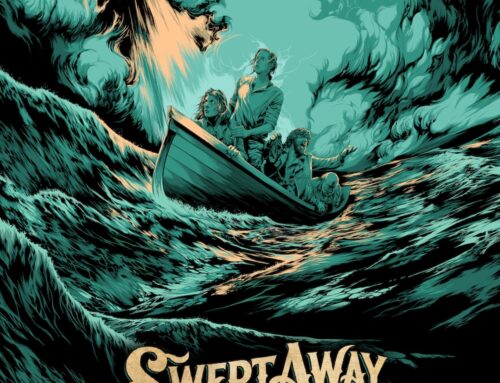 Guest Post by Fay Shapiro
Guest Post by Fay Shapiro
Some of you might remember the transistor radio. In some respects, it was the great grandfather of the iPod. The transistor radio made its debut on October 18, 1954 when Texas Instruments introduced the Regency TR-1, the first commercially available version of the product.
With its invention, people could listen to music, news and sports wherever and whenever they wanted. In a way, it marked the beginning of our mobile society, which would be fully realized in our current decade given all of the devices available today.
By inventing the transistor radio, Texas Instruments filled a need. People were on the move. They owned cars. They took vacations. They lived further away from where they worked. They wanted entertainment, sports and news and, given its portability, the transistor radio fulfilled those needs.
In 1954, phones were in homes, offices and street corners, computers were monstrous machines used by large companies, families gathered in living rooms to watch television, and tablets were medicines prescribed by doctors. Few in that era could have envisioned the changes that would develop over the course of the next 60 years.
Fast-forward to today: people are more mobile than ever.
Computers are smaller. Phones are smarter. And watches are no longer just for telling time. Information travels at breakneck speeds across multiple platforms giving users a myriad of choices for how they receive information. Not only do today’s users want choices, they want their news and information custom-tailored to their needs and delivered on demand.
Content is the coin of our information economy. And any content-marketing organization must answer the critical question: Does it work?
Most such organizations do not have the answer. Of course, they provide a raft of demographics and a ton of numbers, etc. However, there should be concrete yardsticks by which to measure such efforts.
Here are the four important content metrics a business involved with content marketing must consider and lessons we’ve learned at CommPRO.biz:
1. Consumption metrics
We’re at the top of the funnel here, looking at the people who consume your content. It’s vital to look at the channels they use and the frequency of their consumption. Consumption metrics tell you, the content creator, what’s working and when you need to go back to the drawing board.
For example: when we launched CommPRO, the typical contributed post was 1,000+ words. The community was scanning, spending less than a minute on a post. Then we started to mix up the editorial formula, 500+ words, infographics, video and presentations. The engagement and content consumption increased 200%.
2. Sharing metrics
Today social sharing is more important than ever. This means you also have to be looking at how your content is being shared, because that, in large part, can determine how and by whom it is consumed.
There is no upside to tragedies or acts of terror. The only thing we can do is learn from them how best to be of service.
So, when the horrific Sandy Hook shooting occurred in December of 2014, we asked crisis communications expert Gerard Braud to host a free teleseminar. This happened a few days after the shooting. More than 1,000 people joined this important discussion. Today, more than 10,000 have listened to the on-demand recording. By making this content freely available, it has been widely shared and, I hope, of great service to communication professionals worldwide.
3. Lead metrics (a.k.a. Marketing’s part of the sales pipeline and the middle of the sales funnel)
In this instance, the objective is to see new leads generated and existing leads engaging with your content. At CommPRO we closely track enrollment at webinars with engagement in content and branded intellectual property (e.g. ebooks, whitepapers, etc.) tied to webinar subject matter.
Leads and engagement with topics are the primary drivers for our event development. For example, 2015 is truly the year of “ROI.” Influencer posts and events are driven by the ROI of topics ranging from email marketing to press releases and social media. The CommPRO model is to develop events based upon this relevant influencer topic, your “ROI” of a specific business objective.
4. Sales metrics
This is the proverbial “bottom line” of your sales funnel. At CommPRO, our primary sales metric is driven by the successful engagement of our sponsor partners who, through our various platforms, reach key decision-makers.
The sales process is a creative one. We develop event topics together, as well as influencer lists for event participants. The objective: to create content-rich experiences, akin to The London Times’ 100 case studies.
CommPRO’s overall content strategy is a collaborative effort. Like other educational media platforms, we don’t “sell” our partners. We measure our sales success based upon the engagement success of our sponsor partners and the participation of the CommPRO community in our monthly events.
Companies that will thrive in the digital age will be those that recognize the informational needs of today’s time-constrained communication pros. They’ll know that it’s critical to deliver news and information, customized to the specific user, across the full spectrum of communication vehicles.
In short, they’ll provide valuable, actionable content through any platform, any time. And they’ll be using the right metrics to measure their success.
Photo: Jeff Sheldon via Unsplash, CC Zero
 Fay Shapiro is founding member and publisher of CommPRO.biz. Her passion is achieving ROI for both clients and colleagues by delivering business-building results for professionals working in public relations, investor relations and marketing communications. Fay grew up in the world of communications, learning the ropes as editorial director at Bacon’s Information (now Cision), and then venturing into the publishing world with Oxbridge Communications, BurrellesLuce, O’Dwyer’s, and Bulldog Reporter. Founded in 2010, CommPRO.biz is today a global community of influencers involved in all aspects of the communication field, and media hub for the industry.
Fay Shapiro is founding member and publisher of CommPRO.biz. Her passion is achieving ROI for both clients and colleagues by delivering business-building results for professionals working in public relations, investor relations and marketing communications. Fay grew up in the world of communications, learning the ropes as editorial director at Bacon’s Information (now Cision), and then venturing into the publishing world with Oxbridge Communications, BurrellesLuce, O’Dwyer’s, and Bulldog Reporter. Founded in 2010, CommPRO.biz is today a global community of influencers involved in all aspects of the communication field, and media hub for the industry.









[…] course, the audio-visual landscape has changed dramatically since then. Yet most communicators – myself included – are still woven to the word as the ultimate […]
RaymondMorinV2 Thanks so much for sharing FayScommPRO guest #WUL post
ShellyKramer TYVM for sharing FayScommPRO guest #WUL post, Shell!
[…] They provide a common language for comparison purposes. Having common language and measurement approaches is crucial for organizations and professionals, particularly those that use a combination of public relations agencies, media monitoring services and in-house media teams to measure campaigns across brands, units and countries. […]
RenildeDeWit leaderswest xpotomac jfouts Thanks so much for sharing FayScommPRO great guest #WUL post!